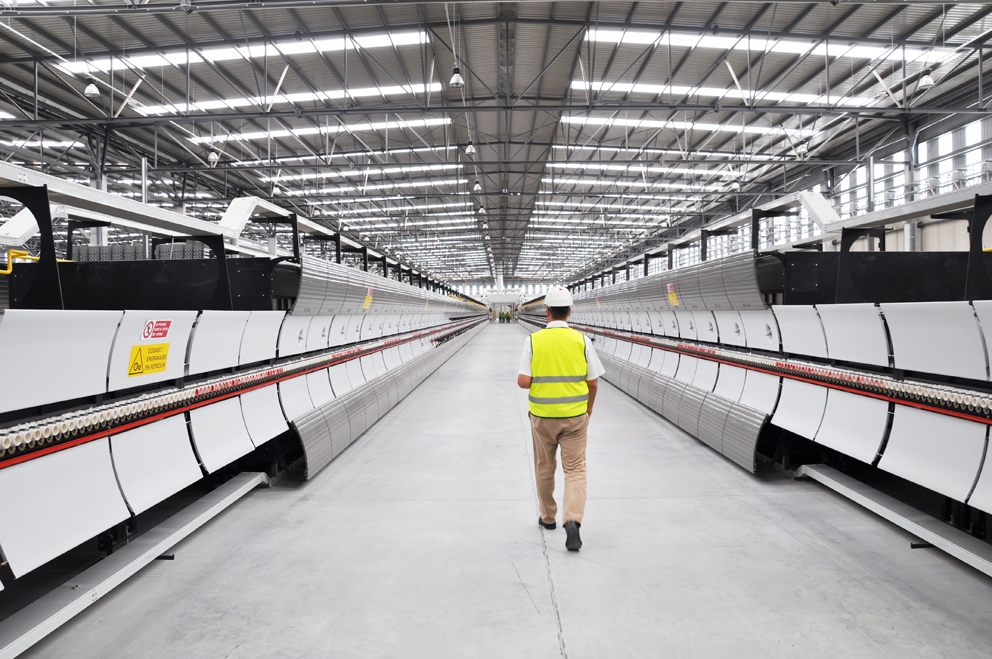
A small Gallic village flashes up in our mind’s eye, complete with Asterix, Obelix and, not to forget, Miraculix, the druid with the long white beard. Surprisingly so, because we are in fact miles away from the Breton coast, in Spain, a country that is going through tough economic times at the moment. Here too, we think, there has to be a “little village” whose residents have a special recipe, indeed a “magic formula” that will help better things.
The village in question is a place named Cantoria in the southwest of Spain, located in the midst of an inhospitable region, just two hills away from Europe’s only desert. The villagers – at least some of them – go by the name of Cosentino. As does a family-run business, which in 1940 operated just a single marble quarry. Over the years, spanning many a high and low, the Cosentinos looked into ways of putting the waste produced in marble cutting to good use. Trying to find a “magic formula”, it seems. The method they came up with involves pressing a liquid mass into solid slabs with the help of pressure and heat. In the 1980s they eventually launched a material that combined the advantages of industrial manufacturing with the excellent properties as well as the disadvantages of marble, including discoloration, acid sensitivity, etc. It flopped.
Keen for success, the Cosentinos decided to change tack and modified their “magic formula” accordingly, replacing marble with quartz crystal. 1990 saw the birth of “Silestone”, a moldable, durable, hygienic material that was available in a wide range of colors and finishes. Today “Silestone” is responsible for more than 80 percent of the company’s turnover. And that’s not all. The question of how innovative surfaces of superior quality can be developed in a responsible manner is pushing the company to ever new heights. And with that the “magic formula” has become ever more sophisticated.
The “Eco” version contains a proportion of recycled glass, which means the company can offer a material for LEED-certified buildings that amidst all the hype about eco-friendly construction materials actually deserves to be called sustainable.
Nonetheless, Cosentino’s Miraculix never tires of doing more research. There is no doubt that “Silestone” has many advantages to offer, but as yet it does not meet the b1 fire protection classification and is therefore not fit for use on façades and in outdoor areas. So the “magic formula” underwent further refinement. The result: “Dekton by Cosentino”, a material that is surprisingly sturdy, both as regards scratching and abrasions and impact resistance. In addition it withstands pressure and thanks to its UV and color fastness it is suitable for use in extreme temperatures, rounding out its key properties.
Customers who order more than 1,000 square meters get to select the print pattern of their choice.
The progress this family business has made in recent decades is remarkable to say the least: A small quarry operator transformed into an industrial company. Indeed, especially for “Dekton” an entire new factory was set up, which boasts some impressive superlatives. Among them is the world’s most powerful press, which uses a 25,000-ton pressure to squeeze the last remaining drop of water and air cavity from the material. It is then printed in a gigantic printer and turned into solid slabs at 1,200 degrees Celsius in a 180-meter-long furnace. This much has been revealed about the “magic formula”, but that is all. The other ingredients are kept top secret – just like the Coca-Cola formula.



Cosentino started years ago with processing marble and even today marble is used in various products. Photo © Robert Volhard, Stylepark

Five of the 1500 daily produced slabs which are available in the material thicknesses from one to three inches. Photo © Robert Volhard, Stylepark

The company history of Cosentino started with two factory buildings in Spain in 1940. Photo © Robert Volhard, Stylepark
|

Cosentino wins the quartz crystal and natural stone in 14 quarries. Photo © Robert Volhard, Stylepark

Three of the twelve different color and texture variations of Dekton. Photo © Robert Volhard, Stylepark

The Cosentino head office in Cantoria in southwest Spain. Photo © Robert Volhard, Stylepark
|


|
Video © Robert Volhard
|
|
Video © Robert Volhard
|
